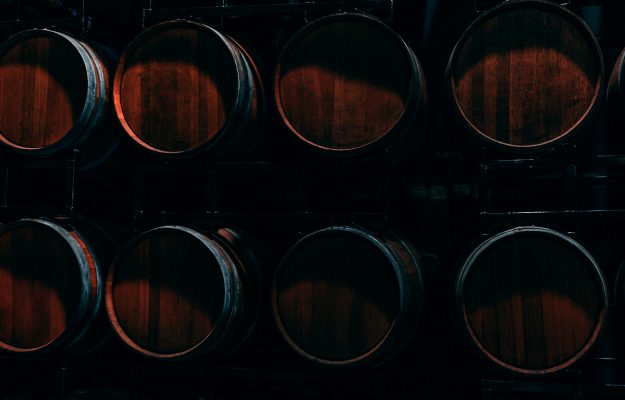Under a scorching heat that continues to press down on Italy and Europe, the wineries of Italy are looking ahead to the approach of a harvest that will be all to be deciphered not only in the classic terms of quality and quantity of production, but also in terms of operating costs, with energy, fuels and other raw materials at very high levels, a labor force that, as in other sectors, is increasingly complicated to find, and so on. In the meantime, however, compared to the past months, already the bulk wine prices of the most important appellations of Italy’s three leading wine-producing regions, namely Piedmont, Tuscany and Veneto, have moved upward, albeit not too noticeably, according to only the official lists of the relevant territorial Chambers of Commerce.
In Piedmont, according to surveys by the Cuneo Chamber of Commerce (updated as of July 20, 2022), prices range from 856.5 to 909.3 euros for Barolo Docg 2018, while 2019 (at the time of the surveys, referring to the May-June 2022 bimonthly period) fluctuates between 730 and 840 euros per hectolitre, up on our last monitoring, in March 2022. And if for Barbaresco 2018 the quotation is stable, between 476 and 490 euros, the 2019 vintage fluctuates in a much higher range, between 623.7 and 650 euros per hectolitre. Quotations for Nebbiolo d’Alba are growing, between 276.7 and 325 euros for the 2020 vintage, Langhe Nebbiolo is in the range between 284 and 354 euros for the 2021 vintage, and Barbera d’Alba ranges between 228 and 300 euros for the 2020 vintage, and between 274 and 296 for the 2021 vintage. For the Alessandria Chamber of Commerce, on the other hand, as of July 18, Barbera d’Asti is moving between 120 and 170 euros per hectoliter for the 2020 vintage, Monferrato’s between 120 and 140, and Gavi among the whites, is between 240 and 300 euros per liter. With all Piedmontese appellations, then, trending upward on a few months ago.
In Tuscany, on the other hand, according to data as of July 20, 2022, from the Chamber of Commerce of Siena, Brunello di Montalcino 2017 still ranges between 950 and 1,150 euros per hectolitre, the 2018 vintage remains between 750 and 950 euros, while the 2020 and 2021 vintages quote between 700 and 800 euros per hectolitre. On the Rosso di Montalcino front, however, it ranges from 300 to 450 euros per hectolitre for the 2020 vintage, and between 300 and 400 for the 2021. In a framework marked by stability. In very slight growth are the quotations for Chianti Classico, with similar quotations for the vintages reported, from 2017 to 2021, with lows starting from 265-280 euros, and highs between 315 and 345 euros per hectolitre (particularly for the 2020 vintage). Stable values for Chianti, between 140 and 180 euros per hectolitre for the 2018 to 2021 vintages, as well as for Nobile di Montepulciano, with the 2017 and 2018 vintages between 330 and 380 euros per hectolitre, and the 2019 between 340 and 390 euros, and also for Vernaccia di San Gimignano, with quotations, for the 2019, 2020 and 2021 vintages, ranging from 135 to 160 euros per hectolitre. Missing from the Tuscan scene are the wines of Bolgheri, which, despite being by now firmly among the most important in Italy, do not see their prices being surveyed by the Maremma and Tyrrhenian Chamber of Commerce (but according to data from the Consorzio per la Tutela dei Vini Doc Bolgheri and Doc Bolgheri Sassicaia, headed by Albiera Antinori, referring to March 2022, Bolgheri Rosso 2021 was around 850 euros per hectoliter, touching 1. 000 for organic, while it was around 1,400 euros per hectolitre for Bolgheri Rosso Superiore, which, however, in fact, is hardly traded by anyone, ed).
In Veneto, on the other hand, Valpolicella wine prices are essentially stable as of July 18, 2022, according to Verona Chamber of Commerce surveys. Amarone and Recioto from the 2018, 2019, and 2020 vintages fluctuate between 930 and 960 euros per hectoliter, with production from the Classica zone starting at 960 and reaching 1. 000 euros per hectolitre, while Valpolicella Ripasso remains between 320 and 340 euros per hectolitre for both 2019 and 2020 production, rising to 360-390 euros per hectolitre for the classic version, while Valpolicella Doc ranges from 190 to 210 euros per hectolitre for 2021 production, rising to 250-270 for the classic. Among the whites, Lugana is still growing slightly, between 360 and 380 euros per hectolitre with 2021, Soave Classico 2021 is stable between 100 and 115 euros per hectolitre, Bardolino fluctuates between 100 and 120 for the different versions (“base”, classico and Chiaretto), and Pinot Grigio delle Venezie moves between 110 and 120 euros per hectolitre. Still, the quotations of the “Prosecco system” continue to grow: according to the Chamber of Commerce of Treviso, as of July 19, 2022, Prosecco Doc fluctuates between 230 and 250 euros per hectolitre, stable, while Conegliano Valdobbiadene Prosecco Superiore Docg fluctuates grows on the latest survey, and moves between 300 and 315 euros per hectolitre, with the “Rive” type ranging from 300 to 320 euros. A scenario, therefore, that, overall, can be read between stability and an increase, and which is also confirmed in the trend of common wines, according to Ismea data updated to June 2022, with quotations of 4.2 euros per hectoliter for common white wines (+15% compared to June 2021) and 4.3 euros per hectoliter for reds (+4.9% on June 2021).
Copyright © 2000/2025
Contatti: info@winenews.it
Seguici anche su Twitter: @WineNewsIt
Seguici anche su Facebook: @winenewsit
Questo articolo è tratto dall'archivio di WineNews - Tutti i diritti riservati - Copyright © 2000/2025









































































































































































































